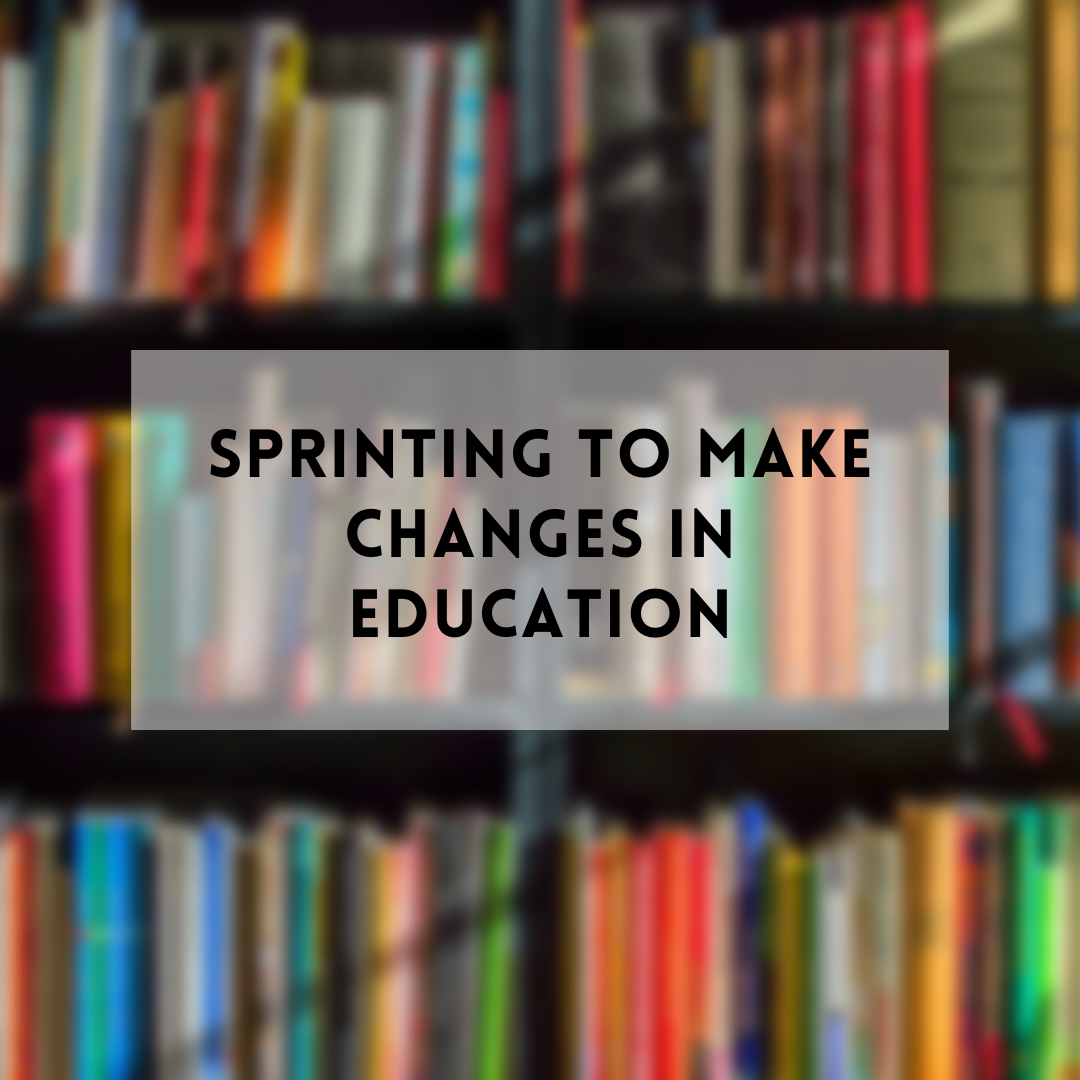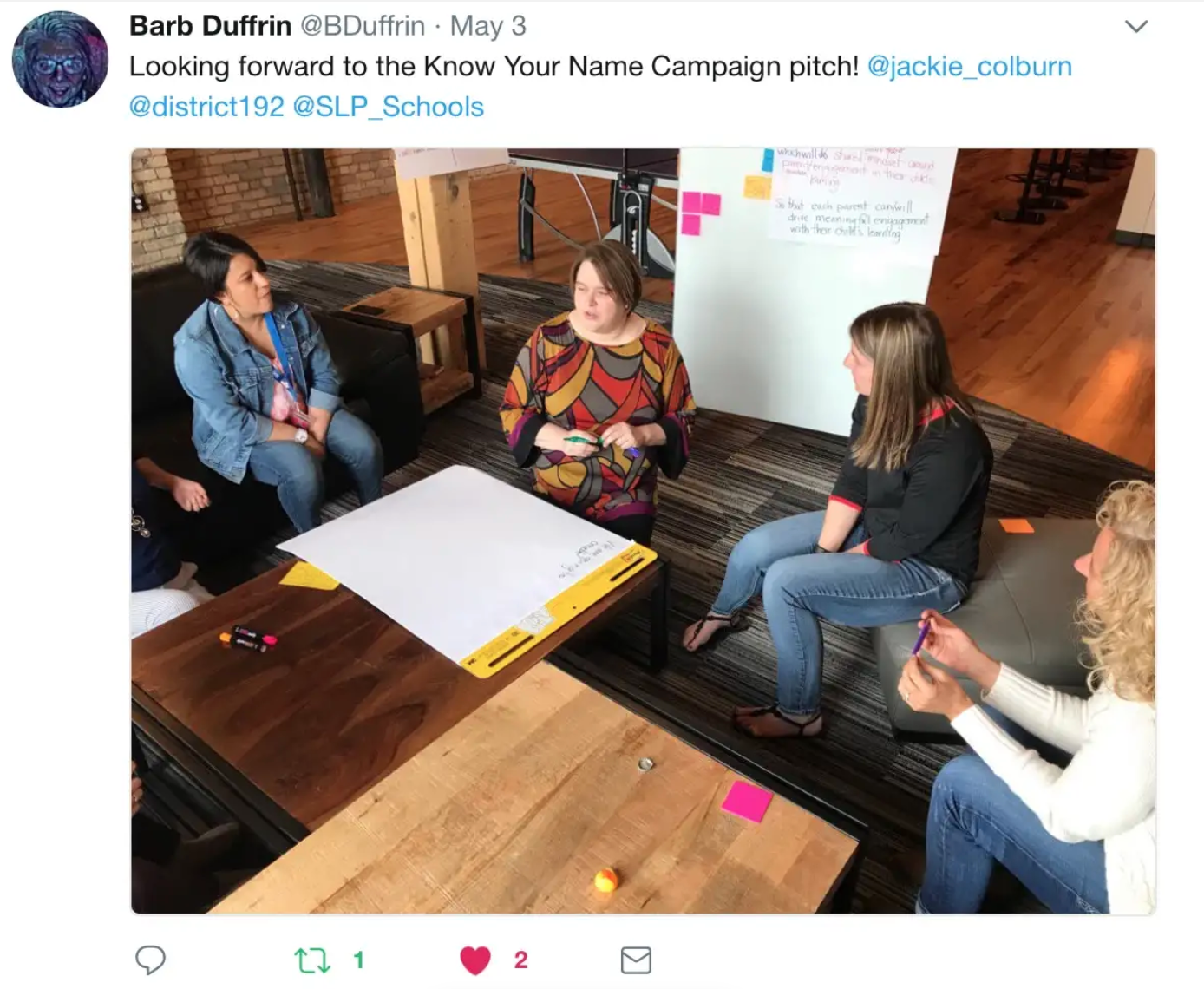Sprinting to make changes in education
My favorite design thinking (human centered design) methods for educators explained + how to use them to improve education.
“Stephen Spahn, chancellor of New York’s preschool-12 Dwight School and the longest serving head of an independent school in the U.S. believes that curriculum must evolve constantly to keep pace with the realities students will face as they transition into the world of work — and that means learning by doing.” — Forbes
I have had the privilege of running Design Sprints with a number of educators this year to solve the challenges they face in their classrooms and schools everyday. We sprint together and use design thinking (human centered design) methods together over the course of 1–2 days.
The methods used are both a means to solve the challenges at hand and as practice so that educators walk away with tools they can use to continuously improve and refine on their own.
First: we identify our “to solve” and refine by putting the human beings we aim to help at the center of our problem solving.
Then: we come up with new ideas rapidly.
Last: we define solutions that will be tested and tried after our work together.
With a Design Sprint, you are deciding that you are going to design a new solution in a constrained amount of time. You are committing to come up with something new to test in the world. I typically run 1–2 day sprints with educators and we start with 1–2 opportunity areas.
If you are working on your own, decide how much time you will invest and block that time on the calendar. The bigger and more complex the challenge is, the more time you may need to define a new solution. However, don’t let the fact that you can only dedicate a few hours stop you from proceeding. If you commit and focus, you may be surprised at what you come up with in just a few hours time. Schedule that time and decide to conquer your challenge with your team.
First: From problem to “How Might We?”
When you embark upon a mission to change something, it is important to frame up the problem you are solving. Starting with “How Might We” is inherently optimistic and gives you space to consider many answers. The “might” part of the statement also implies that you are trying something. It’s not a 100% certain solution but it is a best guess and something that you are willing to put out into the world and try.
Here’s how to get from problem to How Might We:
Identify a problem or something that isn’t working well such as:
“Parents aren’t engaged with their kids learning.”
Identify the reason that you care. This is the reason you are spending time solving this problem at all:
“We know when families are involved, kids do better.”
Next, add insights or input from real people to help you gain empathy for those you aim to help (more on that next) such as:
“Parents are strapped for time and don’t know where to begin.”
Which leads us to the following How Might We:
“How might we create low barrier opportunities for families to engage in their child’s learning?”
Empathy building
As an input to defining your How Might We statements, it’s important to orient yourself to the people who you aim to help. In education this means you are likely talking to students and families. Identify their needs, wants and desires through gathering information formally or informally.
Options:
Draw from a survey or feedback that has been given anecdotally. Bring quotes to your Design Sprint and put them up in a presentation on a big screen or on big post-its in the room.
Even better — invite people to participate and interview them as an input to your work.
Example:
Say you have received feedback that the registration process for school is confusing for families and you want to design ways to improve it. You could either bring a few quotes that came out of emails sent to the district and put them up for review. Or — EVEN BETTER — invite a few families in who have recently registered and ask them to tell us about their experiences.
How to interview people:
These interviews can be short: 15–30 mins. Break into teams and have each team of no more than 4 people interview a participant or family.
Write a simple interview guide to refer to: (1) “Hello” — get to know you time (2) “Tell me about your registration experience.” (3) “What was good about it?” (4) “What could have gone better?”
Designate one person to lead the conversation.
Everyone in the team should have a stack of post-it notes. Use those to capture opportunities as you listen.
Think of this as a conversation. The primary topic of discussion is the experience you aim to redesign. Start broad, then move on to specific questions related to your research topic.
Use the opportunities identified to create How Might We statements:
Everyone should have a stack of post-its that came out of the interview. Share those with your team. Sort them into groups. Agree on which ones you think will have the biggest impact if you solve them. Create How Might We statements that incorporate the needs, wants and desires that were identified. Pick your top 2–3 How Might We statements and use those for the next step — Ideation.
Then: Ideation
Good ideas can come from anywhere. Creativity should not be relegated to a select few inside of an organization. Often times, it’s people who are doing the work day in and day out who have ideas for change and improvement that are never heard! Ideation is used to unlock creative potential so that you can open up to possibility and build on one another’s ideas.
How to do it:
Gather your team at a table with post-it notes, sharpies and no laptops or phones in sight.
Post the How Might We statement that you aim to work on up on the wall. Work on one at a time.
Set a timer: 7 mins on the clock.
GO!
Each person in your group should work independently to put as many ideas on post-it notes as possible. Quantity over quality here. Silly is ok. Ideas that you think will never work are great! This is a chance to push our thinking and come up with lots of possible solutions. Think in pictures. Use pictures as much as possible to communicate your ideas. This is because words are interpretive and if you draw a picture, it will more succinctly communicate what you have in mind.
Share-out: Have everyone stand up around a wall or window where you can stick your post-its. One person should start sharing their ideas. Post a post-it and tell the group about the idea. Popcorn style — build and share. If an idea is shared that is similar to another idea, jump in and build.
Theme and cluster the ideas as you go. If new ideas arise as you are sharing, add them to the mix.
REPEAT. I recommend doing this for 2–3 How Might Wes. When you are done, review, theme and cluster a bit more.
Next, use voting dots to vote on favorite ideas that came out of the mix. Which ideas do you want to pursue further?
Last: Defining solutions
The desired outcome of a Design Sprint is a prototype to test with real people. In the world of education, this likely means that you are articulating your solution in storyboard format. You will also need to define the next steps / actions that need to be taken to bring it to life. A key consideration when you are working to define your solution is what can do tomorrow? Think smaller. Choose bite-size changes that you can launch, try and learn from.
From ideation to solution design:
Moving to solution design isn’t a linear and perfect process. When working with your team, it may take a lot of work to align and define the idea you want to pursue or it may happen quickly. When I work with a large group, I break people into teams of 3–6 people. When it comes to storyboarding a solution, some groups are done in 15 minutes because they have aligned around a core idea that they want to bring to life while other groups work an hour together and are still sussing out details and what should be in and what should be out.
After you are done with voting have each person sketch his or her favorite ideas and capture notes on a piece of paper.
Now, each person should have a piece of 8x11 paper folded into 8 squares.
Set the timer for 8 minutes.
GO!
Each person in the group should draw their own version of the new solution. Focus on how what you are making looks and feels for the person you are making it for.
Share.
Work to align and define what the experience looks like together. Create a large storyboard using a big post-it. Create 4–8 frames to articulate the solution. Again, stay focused on how it looks and feels for the person you are helping.
Your storyboard should be something that could communicate your idea to someone who was not a part of your Design Sprint.
When your storyboard is complete, take your idea and share it with other people for feedback.
Options:
Share with another team or peer. Share with your boss. Share with students and families. Ask for their feedback so that you can refine your design even further.
Pitch your idea to them — tell them what problem you were solving and walk them through your storyboard. Ask them to share feedback with you using the following format:
I like_____ , I wish_____ , I wonder_____.
“In order to survive in today’s complex world, organizations need to generate, embrace, and execute on new ideas. That takes creativity and a creatively capable workforce. It’s the secret sauce, or in evolutionary terms, it’s what keeps you fit. Organizations without it can’t compete.” — Tim Brown, Industrial Designer, CEO IDEO





